Trends 2013/2014. Heimtextil 2013.
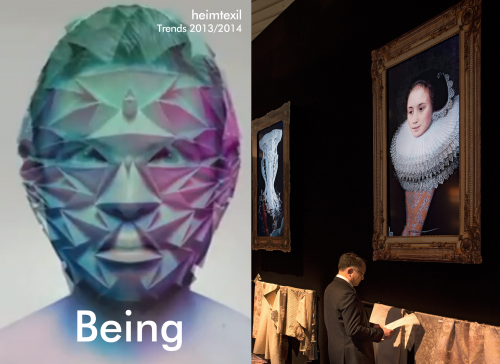 book cover | exhibit (historian)
book cover | exhibit (historian)
The first trend analysis in 2013 caught our attention with ‘Trends 2013/2014’ at Heimtextil 2013. The concept, presentation and story-telling in many ways made it a trend benchmark for the year.
The presentation consists of a a ‘Trend Book’ titled ‘Being’ created by Stijlinstituut Amsterdam which spotlights the home as an aspect of personality and reflects four characters: the historian, the eccentric, the inventor and the geologist, each theme under the motto, ‘you are how you live’. There’s also an exhibit to literally touch the senses.
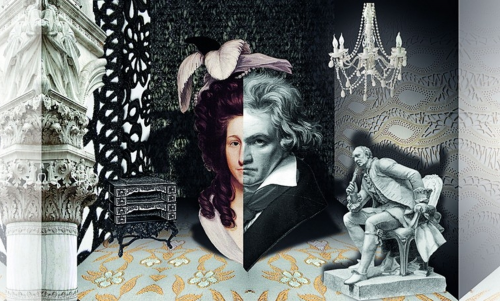
[ the historian ]
Their personality sets great store by enduring values and, at the same time, discovers new ways of bringing the past into the present. Hence, they love fine products distinguished by superior craftsmanship. They gain inspiration from the late 16th and the 17th century, epochs characterised by a wealth of historical art and exquisite craftsmanship. Expressive ornaments, luxuriant decorations and wonderful details radiate an aristocratic dynamism.
The historian is an aficionado of luxury with a sense for the quality and origins of objects. Thus, textiles with a layer look are part of this, as are net fabrics and artistic embroidery. A variety of different techniques and materials, from lace-making to laser cuts, reveal not only the broad spectrum of historical but also of future-oriented arts & crafts. The home is brightened by shimmering gold, bronze and copper, as well as sophisticated reflections from material surfaces. The colors in rooms tend to be subdued and dominated by mysterious shadings.
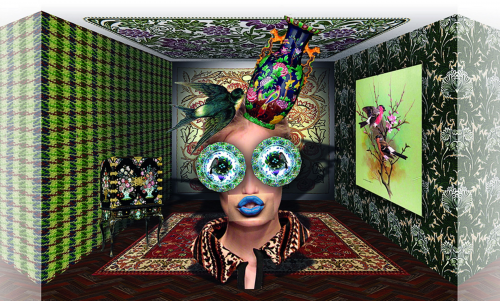
[ the eccentric ]
Their passion is for extravagant discoveries combining timeless qualities with decorative character. The eccentric searches for unique items, curiosities and original articles distinguished by exotic or ethnic influences. At all events, what they find must be traditional and authentic. The modern Dandy and Bohemian loves elegantly made textiles, such as hand-coloured silk, extremely lustrous artificial snakeskin, upholstery fabrics inspired by suit fabrics or oriental jacquards. In their home, we find patterns with ethnic blossoms. The wall coverings take their inspiration from textiles. The dominant colors have an Asian touch and interact in an extraordinary way.
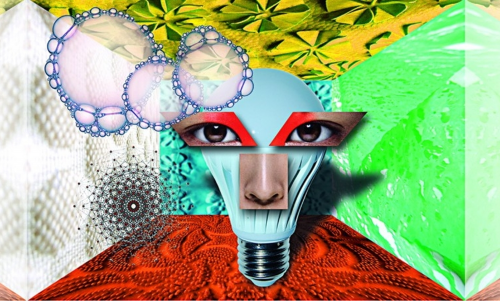
[ the inventor ]
To develop things that make life exciting – that’s the inventor’s challenge. They work on concepts that combine function and fun, as well as wellness and pleasures. Their yearning takes them to undiscovered worlds full of marvels and adventure. They love to try new things, a character trait that has a decisive influence on the design process. Fabrics are literally brought to life: they sway, flutter and grow as flowery ornaments – extremely sensuous and tactile. The inventor experiments with extraordinary upholstery fabrics, openwork weaves and meshwork. Foamed textiles create an airy depth and give rooms and furniture a new look. Technical veils, iridescent films and latex are also used. Feather-light constructions play with light and reflections. Lively color ensure extraordinary contrasts and awaken curiosity.
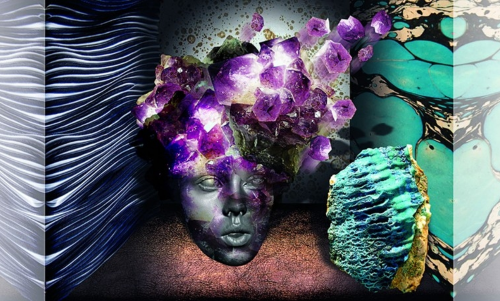
[ the geologist ]
The nature lover appreciates and protects the earth and all its treasures. He researches into them down into the deepest layers and travels on a journey of discovery to find the unknown and unexpected. They know the quality and origins of a product. They are fascinated by the irregularities of geological surfaces. In their environment, natural structures are upgraded by colourful marl aspects and winding, viral patterns, as well as rough graininess, bark-like textures and rustic leather, skin or natural cork. Blotch effects bring otherwise sober surfaces to life. Broken, mysterious brightness flashes from the materials. The colour series reflects the enigmatic dark side of nature. Intensive color are rounded off by shades of virulent intensity and metallic lustre.
[ trendtable ]
The Heimtextil 2013 trends are compiled by a Trendtable consisting of international design agencies from six countries which developed a global vision for upcoming interior trends.

Cem Bora, Gen Lamaud, Grégory Lamaud, Mark Woodman, Dan Namura, Celaine Refosco, Louis gérin, Claudia Herke, Anne Marie Commandeur, Arie Vervelde — Anne Marie and Arie | concept and development of ‘Being’
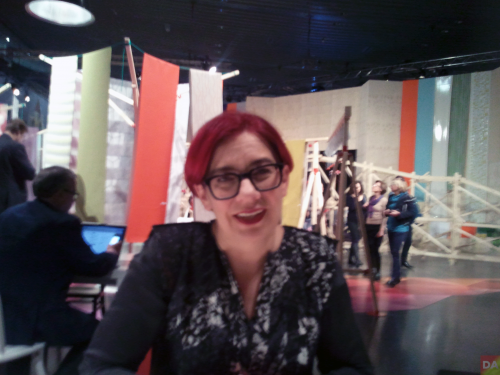
Anne Marie Commandeur heads a team of designers at Stijlinstituut Amsterdam (NL) who specialise in the fields of textile innovations, prognoses, color trends and strategic design concepts. She along Arie Vervelde (also with Stijlinstituut) are responsible for the conceptual development of the Heimtextil Trends 2013/14.
[DesignApplause] What’s the process, the gathering of information and pulling it together?
[Anne Marie Commandeur] We do a year-around research with industries like cosmetics, interior products, illumination and paint companies, a very broad range of relavent interests. We also look at past and on-going trends, innovations. We must be aware of unchanged products being repackaged in contents of what’s happening now and what could be next. The research includes many sources: brochures, forms, and films, for example. For this we have teams that do research. Some of the research we have to buy and some accompanies projects like when we work with designers. We also have our experience and intuition that gets folded into our information bank. When the time comes we all get together and put on the table what we think is important in the coming years. Even the talk amongst ourselves we find very interesting. Then we have to conjure up how we put this information together and tell a story. What’s interesting when we put it all together very often what causes the most excitement is the overlap. And especially as designers when you begin mixing this and that it becomes interesting to make that mix. In a way it’s dangerous from the point that you can make it difficult for people to have a grasp.
With “Being” we want the message to be both clear and very optimistic because I think there has to be a boost from optimism and creativity now.
Another important part of the story is that things will be different and not everyone will have to invest in it. Some will standstill and one end and some will find a need to change everything, even every year. Some have very strong personal tastes and don’t wish to change. And if for example, in a home you make a big change in one place and the rest doesn’t match anymore. It’s a very emotional process. As designers it’s important how to put change in context and how you link it, not to what new vs old, but to the personality and attitude.
[DA] We just talked about why you did it. How did you arrive at the content in this project?
[AM] Last March we bring everyone together who is involved on this project. We brought our data and intuitions, some going back many years. We all watched the movie about the eccentric ladies and we brought that aspect into the storyline. There were powerful ideas regarding nostalgia and vintage. This whole emotional feeling was developed throughout the year, years actually, not even one year. Some of the team members like Studio Hey, Graduates from Design Academy Eindhoven they exhibited with their project Melvin The Machine during Design Week Eindhoven, and Arie said, ok this is wonderful, these are inventors, bringing in some very analog processes in a very digital time and why do they do this? So the whole idea of making things.
[DA] When you identify a direction when anticipating a forecast, where do you see it playing out first?
[AM] Many things happen simultaneously: the fashion, interiors, product design, the manufacturing. But sometimes there is one idea that suddenly links things all together. But I must admit, the strength is not about a particular. You can place what we have here in another context and it would work. It’s also storytelling. And it’s not that this is ‘the’ story. We could make eight other stories as well.
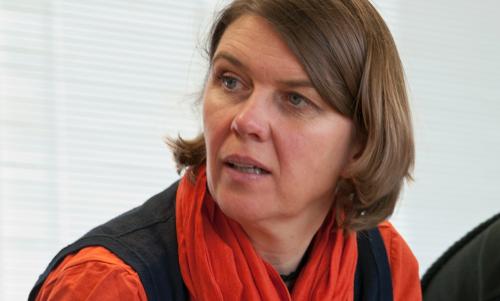
Claudia Herke is a fashion designer with stilbüro bora.herke.palmisano (DE). This interdisciplinary team identifies and visualizes new trends in the areas of fashion, furniture, lifestyle and design and have been members of the creative team since the first Heimtextil Trendtable.
[DesignApplause] Claudia, tell us about yourself, your company, and your involvement.
[Claudia Herke] We are a member of the Trendtable and doing the trends for Germany. We’ve worked for Heimtextil for 15 years as well. We are always involved in the trends presentations for Messe Frankfurt. And we are the first members of the team and the Trendtable was founded five years ago.
[DA] Five years doesn’t seem like a long time but maybe it is. Is there a difference between how trends were done before and now?
[CH] Everything has changed through the years, evolved. Today’s Trendtable seems like a natural evolution. The changes have been gradual. And each time we talk about different topics. Today we talk about decorative materials and surfaces. In the past we talked a lot about flat and minimal, structural, and nature was a big big influence for many years. This year it’s more decorative, more luxury, more elegant.
[DA] There was earlier discussions about modern versus traditional. Modern seems to have more press now, at least in the US it does. Do you feel that what’s coming together now speaks counterpoint, there’s a combination of both, a mix and match?
[CH] Yes, of course. For example we can present a 50s or 60s theme but we make it modern, contemporary. Much of the present represents technology and manufacturing breakthroughs. But you notice this year there is a counterpoint going on at Heimtextil, the talk about craftsmanship and handmade. There are even discussions so far as to encourage the next generation to learn the trades vs the service sector.
[DA] Can you give an example of why mix and matching?
[CH] Modern served up with neutral colors is a bit cold for some but modern can be warmed up with the right color and adding texture. This evolution is most likely market-driven but the end result plays out the same. It’s also a way to connect old vs new. If you can’t afford to clean out the closet and replace everything old with a new wardrobe you need do plan and coordinate so you can mix and match and make your new statement in a more practical way. What really works is classic or vintage with modern. You will probably see many producers of classic products introducing re-editions in Milan. To take this thought further, maybe not much changes in the product itself but new ways to use may be introduced. Both concepts find a receptive audience.
[DA] Looking at the color palettes presented this year how do you arrive at the first color?
[CH] Speaking for ourselves, we begin looking at fashion for new color and texture as well as new storytelling. It’s because we have two big collections in one year, summer and winter. There’s a tremendous amount of media coverage and we see the results in the marketplace in just a few weeks. There are some products that also follow this business model. We also look at students, what they use, what they’re looking for.
[DA] Do you think that two or three very big designers may get together and discuss a color beforehand and then go back to their studio and create a collection?
[CH] You know, sometimes I ask myself if this is possible because some collections are really close together. Another thought could be industry driven. The fabric manufacturers create a wonderful textile and give it to the designer(s) to create the collection. I’m sure both the designer and the manufacturer are always sharing thoughts. But maybe it must be simply something that’s in the air.
[DA] Can you identify a trend going on now?
[CH] Maybe color. Seems to have gone from let’s say one color to a range of colors. And maybe the person is more important then in the past. That personal opinions matter and you can see that idea in the storytelling.
[DA] One last question, I love the fashion examples chosen to tell the story. Are the examples taken from the street?
[CH] Yes, not from the studio. A photographer just sipping coffee waiting for the photo opportunity. I find the self-expression and creativity on the street both amazing and inspiring.
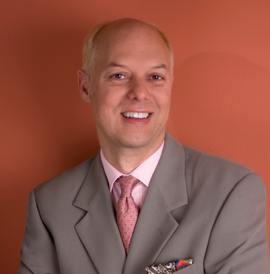 Mark Woodman is head of the North American office of UK based Global Color Research (US) and also founder of design agency Color Marketing Group. He organizes Mix Trends North America, where color nuances are developed especially for North American. His best-known works include furnishing one of the public rooms in the White House.
Mark Woodman is head of the North American office of UK based Global Color Research (US) and also founder of design agency Color Marketing Group. He organizes Mix Trends North America, where color nuances are developed especially for North American. His best-known works include furnishing one of the public rooms in the White House.
[DA] Mark, what is the process you use to arrive at emerging trend?
[Mark Woodman] The process? Everyone does their research and then we get together. We gather as a group and as everyone is presenting we’re all taking notes on post-its. And then when the presentations are done all the post-its go on the wall around the room. And then we start culling and pulling things together and then all of us together start seeing things emerging. So-and-so said it, eight of us jumped on it, seven of us said it’s similar to what we have, and five said it’s exactly like this. Ok, here’s something emerging.
[DA] How do you filter what’s relevent and or a one or two-time occurrence?
[MW] This is one of the cool things about having different people from different industries come together. We all have to filter through our daily lives, both work and personal related happenings. In the work world, our clients tweak things for business decisions – this red is not selling but if we darken it and combine it with the taupe tablecloths we sold last year, the product evolves. It’s more evolution than revolutionary regarding color and design because people don’t have the money for that. When we’re done going through this lengthy process the group is able, feels comfortable, to identity and articulate a relevent happening.
When the economy tanked a lot of things came into play regarding home decorating. The market discouraged you from selling your home and you wanted to change something while not maybe being rude to your neighbors who were hit harder. The answer was towels. You luxed out the bathroom, a space not many see. And you did it with luxe towels, the towel warmers. In the end you noticed that the bedding section had shrunk down but the towel section is now enormous in the department stores. I see this as trending.
[DA] Do you notice a change in traditional versus modern genres?
[MW] I’ve seen the influence of modern on traditional. It started in the kitchen. The clean-line euro-style systems replaced the old and when the kitchen was done you walked out of the kitchen and looked at that big over-stuffed sofa.
Rolls Royce just announced a massive increase in sales last year. High-end will always be high-end and this sector operates on it’s own dynamics. Though I’m always intrigued with what the mid-market is doing because they’re the drivers, driving the majority of pieces. But what’s interesting is how the high-end funds the mid-market initially. For example, when Mercedes put in air-bags in the 90s they essentially funded the research. And when the air-bag sells the price comes down so eventually everyone has it. And Audi worked out the technology on the LED headlights for their high-end cars. Now you see LED’s on the Leaf.
[DA] The talk here has been about color and texture and you’re a color specialist. What do you see?
[MW] I think 2012 is a benchmark year in the US for color. Mostly in clothing but it filtered into the home a little bit too. Previously select manufacturers or retailers were the only ones clearly making color statements. And what’s interesting here, in 2012 it was the out-of-country retailers who were bringing in the color and in 2012 everyone in the US jumped on it. Totally a new happening, not something we had.
In good ways, ‘Beings” raised more questions than answers regarding trending so anticipate more trending coverage in the future. [ heimtextil trends 2013/14 ] [ heimtextil trends 2014/15 ]
<a href="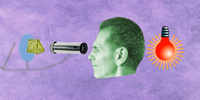 about ron kovach
about ron kovach


